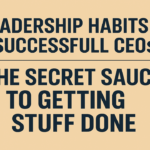What is content curation? Content curation is the act of sharing the best content from multiple sources. It’s often done to create a more cohesive look for your site, but it can also be used for SEO purposes.
Curation is the act of curating content, which can mean sharing the best content with your audience.
The ways to share the best content with your audience include:
- Instagram: Instagram has become a huge platform for curation. You can use hashtags to find specific topics and then post images related to those topics. This can be a great way to engage with your audience and also help them find new content they might like.
- Facebook: Facebook has become a major source of curating content, especially on its news feed. You can use Facebook Pages to create groups around specific topics or events, then share those groups with your friends and followers via posts and stories.
- Twitter: Twitter is another great place for sharing curated content. You can search for hashtags relevant to what you want to talk about and follow people who are posting similar things in order to get their updates in real time!
What is content curation?
You understand as a website owner or blogger that new, high-quality material is the lifeblood of your business. But making this content available isn’t simple. If you ever struggle to come up with topics for your upcoming blog posts, try to picture yourself with an endless supply of fresh thoughts and perspectives that are exactly suited for your audience. The promise of content curation is this.
The term “content curation” has been very popular lately, yet it is not entirely clear what it means. You must be aware of this if you engage in any kind of online activity. This is because good curation will enable you to attract readers by giving them the information they’re seeking. Here is a guide to content curation and how it may be used.
Web decoding
You might believe that people use the internet to search for information, but that isn’t entirely accurate. The internet today is flooded with information.
They seek facts, information, and practical techniques that make sense. Your audience wants advice that has been hand-picked from the deluge, contextualized, discussed, and placed into perspective. They want information that clarifies issues, improves lives and provides answers to queries.
As you might expect, being able to give the searcher exactly what they’re looking for puts you in a very strong position.
You are now a specialist who can access and make sense of the vast torrent of data that constantly travels through the internet, no longer just one of a million similar faces.
Just consider the advantages this offers:
- You’re providing the high-quality content that your readers want.
- Giving your readers a vital insight that they can use in their day will do more to encourage them to click the Twitter, Facebook, or Google+ buttons than anything else. This will improve your ranks since Google now values social signals.
- Another major benefit in the eyes of search engines is the creation of trust and reputation as an authority site through the constant provision of freshly updated information.
- No longer are you at a loss for themes. It can be difficult to update a blog, but with curation, you always have a stream of new material available. All you need to do is understand how to use it.
It sounds fantastic, but how do you accomplish it?
The curation of content
You keep an eye on your specialized area for the most recent and intriguing news and events. Choose a section, anything from a phrase to several paragraphs, when you locate something that will be helpful to your audience.
While e-text is the most prevalent type of content, you can also curate images and videos. After that, you make your observations about the data. There should always be a reference to the source included.
You’ve been reading selected information throughout your life, even if you’re not aware of it. Take a look at the financial sections of your neighborhood paper. The government releases some numbers, and your helpful journalist cites government PR sources before adding his interpretation and assessment of the data. He clarifies what it means for you and places it in context. which is precisely what you seek.
What is NOT content curation?
One distinction is that it is not auto blogging. Simply said, auto blogging is the process of taking feeds and automatically posting them to your blog. As a result, there is duplicate content that is not unique and is not ordered. This mechanism used to function, but Google has now completely devalued auto blogs.
But isn’t that plagiarism or duplicate content? No, because all you’re doing is taking a quote, giving credit to the original author, and then adding your own commentary. You can see that major, reliable news sites consistently do this online by taking a short look. Each website will quote a breaking news item and add its own perspective. For your niche, you are doing the same.
How do you start a content curation business?
Understanding and keeping a close eye on what’s occurring in your market and sector is essential to quality curation. So it should come as no surprise that utilizing the information flow on the internet and selecting, categorizing, contextualizing, and commenting on information requires specific knowledge.
The relevance of curating content
Although content curation may have earned a bad image and been viewed negatively in the past, that is definitely not the case today. Curated content is a popular and acknowledged technique to share content with lots of people at once in the modern world.
The connection between curation and content
More and more companies, big and small, are employing curated content as part of their content marketing campaigns as the stigma associated with it is starting to fade. Utilizing curated content in addition to your original content has several benefits, and it’s crucial to recognize the connection and overlap between the two.
Utilizing both kinds of material will probably draw people to your website, and the information you share will hopefully maintain their attention and encourage them to return often to read more. They will become more devoted to you and your company as their interest in the stuff you share grows. That is the best approach to create a strong bond between you two.
You claim that you desire to provide as much value as you can to others through the stuff that you share with them. For the advantage of your intended audience, you should do this. Any way you can, you want to assist them. Sharing curated material has a lot of benefits, one of which is that it provides a variety of opinions and points of view. Your target audience will find it much more intriguing if you vary your content (with attribution, of course, on the curated content), and they will value the value and quality of what you are providing them to read.
A fresh approach to sharing useful information
This strategy is a good way to rein in a good amount of the crucial, relevant information that is constantly available and easily accessible and to use it very efficiently. Giving your readers a fresh perspective on the same subject through content curation is a fantastic strategy.
Both the perspective and the angle are different. It encourages imagination and fresh thinking. In actuality, curated content gives your target audience many fresh ideas and maintains your material fascinating and current.
Optimizing Content Curation for Maximum Impact
In the realm of content creation, some critics argue against using curated content, claiming it lacks originality. However, curated content isn’t about lacking ideas but amplifying valuable insights. By curating, you enrich your audience’s experience with diverse perspectives.
Curated content, while authored by others, doesn’t diminish its value. It’s a gateway to broader insights, openly acknowledging its sources. Your role is to enhance curated pieces with your perspective, adding depth and value. This approach fosters engagement and respect among your audience.
Introducing thought leaders through curated content expands your audience’s knowledge. Respectfully sharing valuable insights from influencers enhances your content’s credibility. As long as it offers value, curated content can be sourced widely, enriching your audience’s experience.
By leveraging curated content, you demonstrate thought leadership and commitment to enriching your audience’s understanding. Embrace curated content not as a limitation, but as a strategic tool for delivering enriched, valuable insights to your audience.
How to Engage Your Readers with Curated Content?
Curating content to engage your audience involves meticulous selection and strategic presentation. A skilled curator sifts through a plethora of options online to find the most relevant and compelling information. This process isn’t just about compiling links; it’s about crafting a cohesive narrative that educates and resonates.
An effective content curator meticulously organizes information to offer a comprehensive understanding of a topic. By carefully selecting and interpreting materials, they save readers valuable time and effort. The curator’s role mirrors that of a museum curator, who selects artworks to convey a specific theme or context.
Good content curation goes beyond mere aggregation; it involves logical arrangement to highlight key insights. Ethical curators avoid distorting content and instead focus on presenting a balanced perspective. Ultimately, curated content enhances its appeal to a target audience by delivering meaningful and well-presented information.
In summary, successful content curation involves finding, interpreting, and skillfully presenting the best available information on a given subject. By doing so, curators provide value to their readers through insightful and organized content selection.
How to present the curated content to your readers?
The process of content curation consists of two parts. Finding fantastic material that your readers would adore is the initial step. Feeds, alerts, and other technologies can be used to do this. Presenting the content is the next stage. You can share material with your readers in a wide range of locations.
Your blog
Curating content for your blog can help you keep producing new content when you run out of ideas, increase the demographic of your readers, and improve your blog’s SEO. It’s simple to run out of original and fresh ideas once you’ve been writing and publishing posts to your blog for a long time. Curating information for your blog enables you to write unique entries that readers will find interesting. One major benefit is that you don’t need to be an authority on any niche-related subject to find articles about it and leave comments on them.
Facebook fan pages
Facebook fan pages provide a way to post your hand-picked content that is even more “social.” Create fan pages for your niche that highlight related subtopics. Even better, individual pages can be made for each distinct subject. To share stuff on Facebook, either create it yourself or find and share content from other sources. Videos, blogs, photos, and articles all function effectively.
Be careful to use your pages for more than just publishing; also use them to interact with your audience. Don’t let them run automatically. Respond to questions, comments, and other activities on the page by interacting with the readership.
Information graphics
Infographics are merely curated content that has been graphically presented. You pull information from many sources and turn it into a visual representation that your viewers can quickly scan. Infographics are very useful for simplifying difficult concepts into something that can be easily understood.
There are online resources and templates available to make generating infographics simpler. It merely requires inserting in the content after creating the overall design, then making adjustments to make it more aesthetically pleasing. Infographics are also fantastic because you can distribute them to your followers and permit them to reuse them or even put their own names to them.
Email newsletter
Curated content is a fantastic method to enlighten and entertain your email subscribers. Promotional incentives are insufficient to keep people interested. You may build a solid reputation as a reliable information source or the go-to person for their own difficulties by sending your subscribers a regular stream of new content that solves a problem they might be having, informs them of a new method, or is just intriguing to them.
Asking your audience directly what kind of content they would like to get from you is one of the finest strategies to find the proper themes for your emails. Analytics from your subscribers will also provide you with feedback. To determine which information is most intriguing to them, keep an eye on open rates.
Sites for social curation
Social networking platforms made for content curation include List.ly and Pinterest. These are fantastic since they let you communicate with other people while finding and publishing material in one location. Search for websites with a tonne of options that let you tailor your content curation.
Always keep in mind to contribute something of your own to the information you curate, wherever you choose to post. The act of just tweeting a link is not content curation, and neither is cutting and pasting portions of another person’s piece into your own, even if you give them credit. Try citing your content curation as the foundation for your arguments, your thoughts on a subject, or your examination of other people’s viewpoints.
What are the benefits of curated content for readers?
Some people believe that curated material is nothing more than online information that has been “rehashed”! The fact is that creating new and original material can be time-consuming, and it also adds to readers’ information overload.
The content curator, on the other hand, may genuinely offer material in a way that is both relevant and helpful to individuals if done correctly! After all, there isn’t much incentive for marketers to make an effort if readers don’t get anything from what they are viewing!
Let’s examine three reasons why creating content from scratch is not always essential and how the curation process benefits readers.
Information overload is reduced
Readers are not subjected to further information overload by “rehashing” already released material! The amount of information on the internet actually “teems,” making it challenging to absorb or simply keep up with what we are exposed to. The curator merely takes content that is already available online and displays it in a way that perhaps makes it more pertinent or beneficial to viewers.
Greater comprehension
What people read online is frequently not written in an understandable manner! No matter how precise the material may be, if readers cannot understand what it says or implies, it is meaningless. Usually, a “curator” would elaborate on what people are viewing and how it relates to their requirements, perhaps utilizing a different strategy or viewpoint! People are now better able to understand the worth of what they are reading as a result!
Educates
When people can comprehend what is being said, as we just explained, the worth of any reading material may be better judged! People only learn more about the subject they are seeing at this point! Unless it is presented in a way that makes it easier for people to understand, this information is useless to anyone! Because of this, it is crucial to write in a style that anyone can comprehend; otherwise, both the author and the reader risk losing their precious time.
Using material generated by others rather than having to create your own stuff may seem to some like taking the simple route. Due to all of the “unique” reading material individuals are exposed to online, it is a truth that people suffer from information overload! The content curator however actually delivers a ‘service’ to internet readers as described above, in helping them make greater sense of what they’ve read! The content curator aids in increasing readers’ understanding of what is currently available by providing better explanations of “existing” content rather than simply “dropping” more of it online!
Conclusion
Your work and curated content form a solid, logical connection. Embrace curated content to enrich your audience’s experience and deliver valuable information. Broaden your focus to include a wider range of content, benefiting everyone. Using original and curated material boosts your content marketing by expanding your reach and network.












